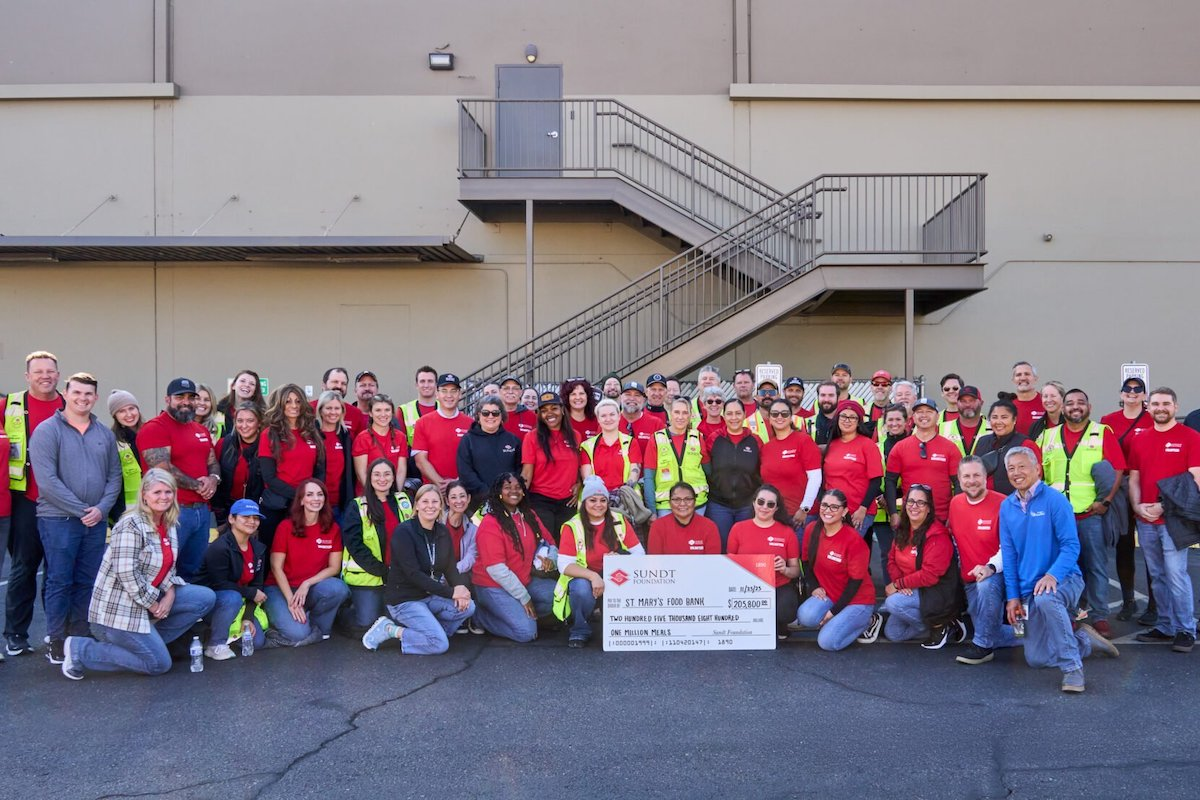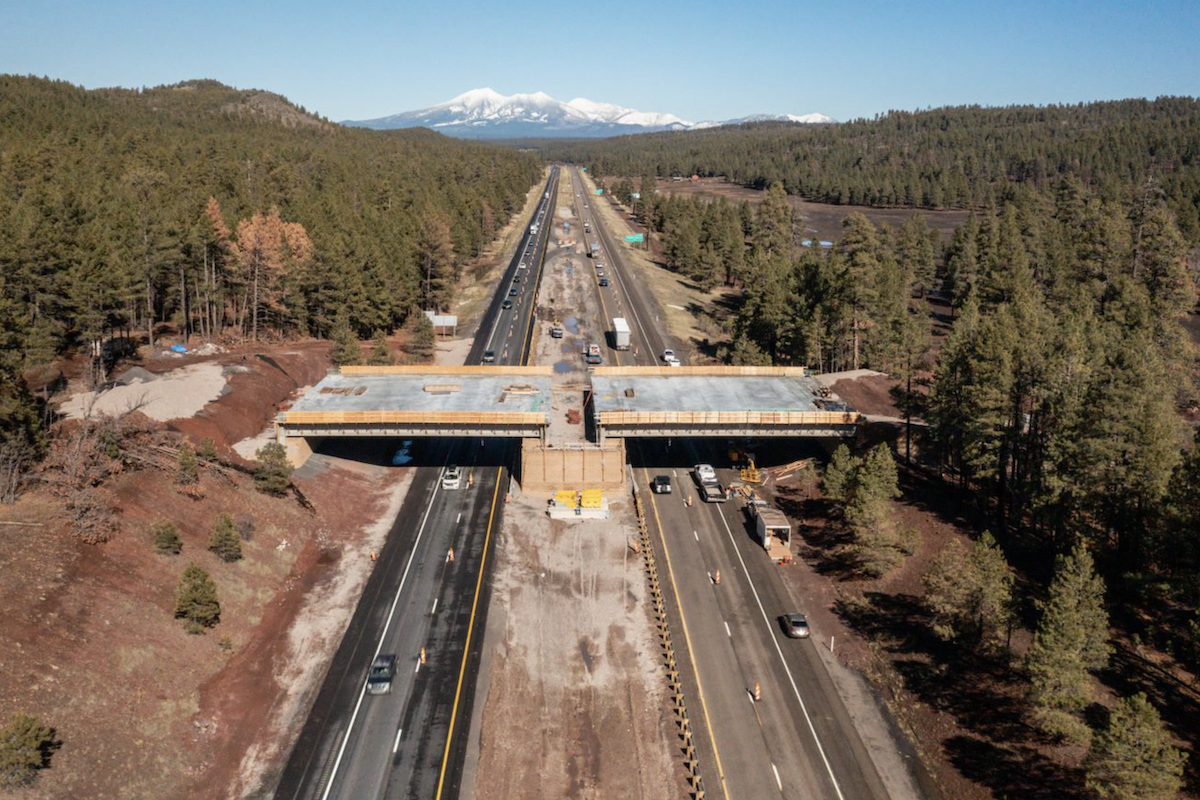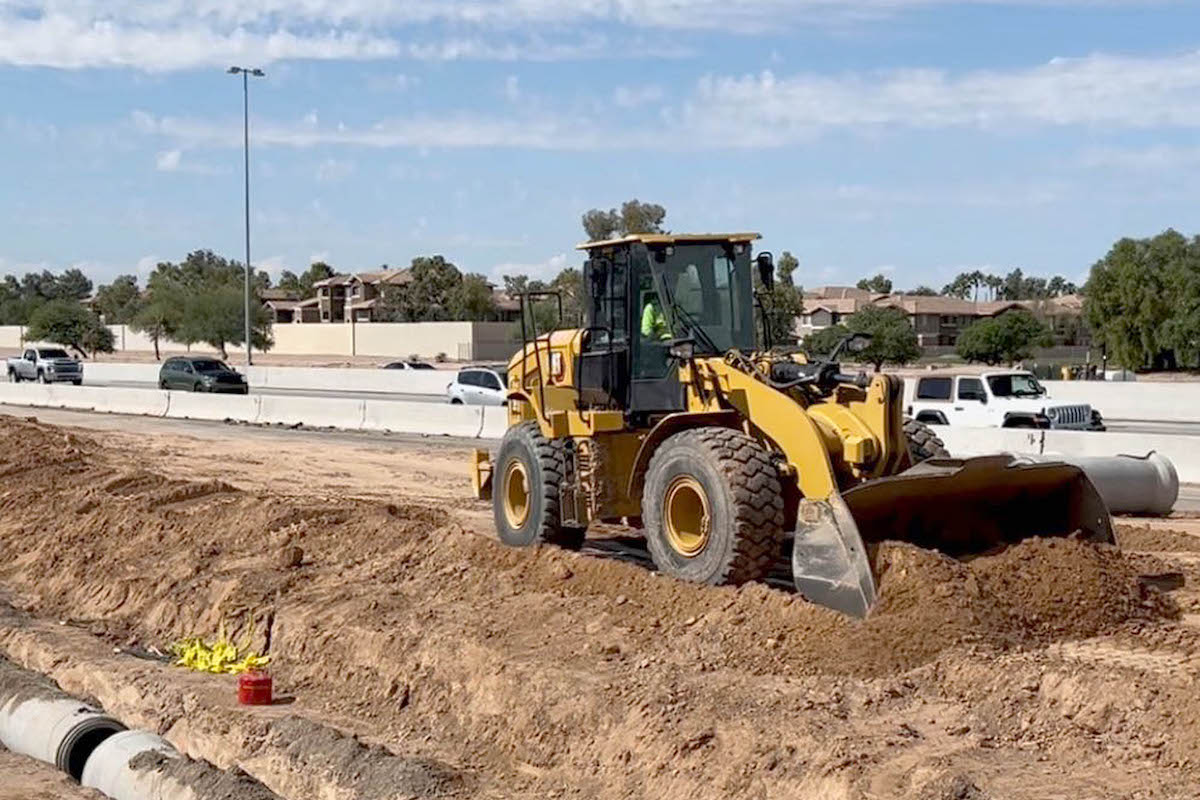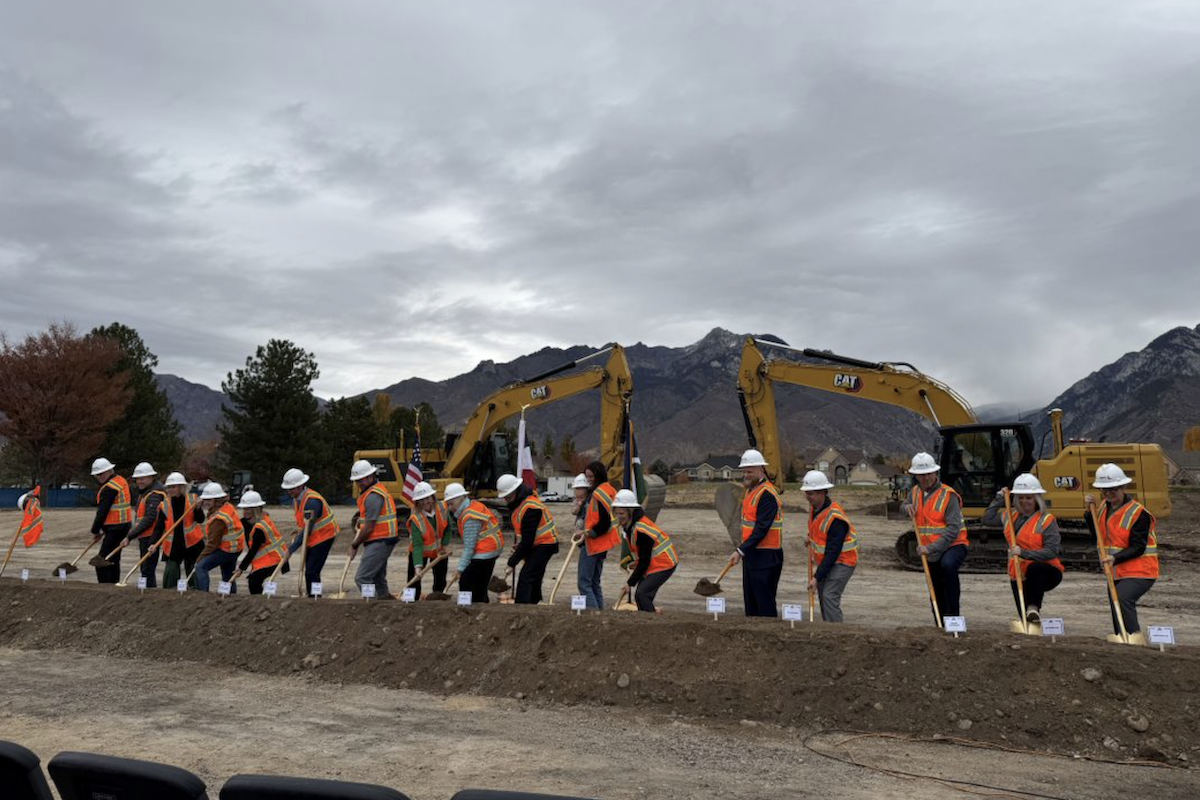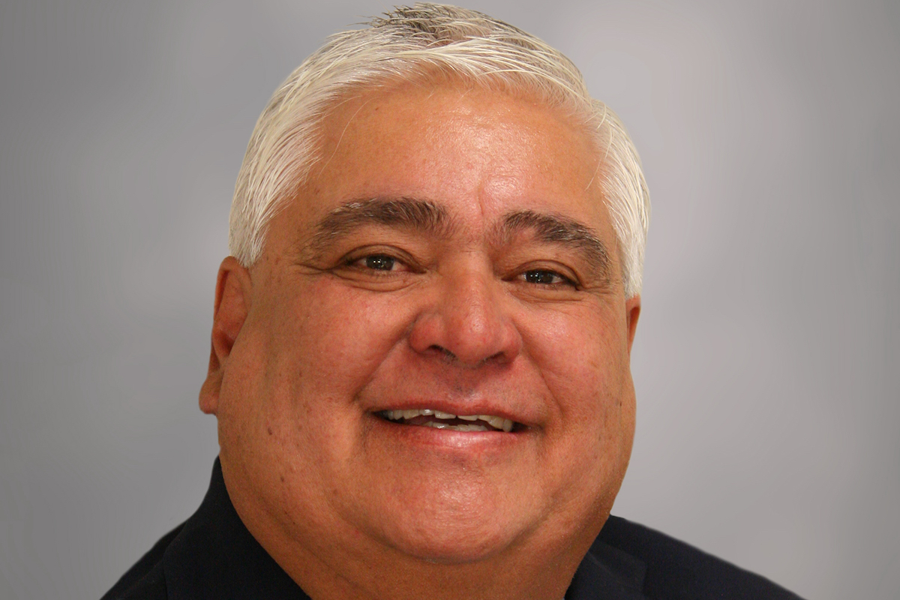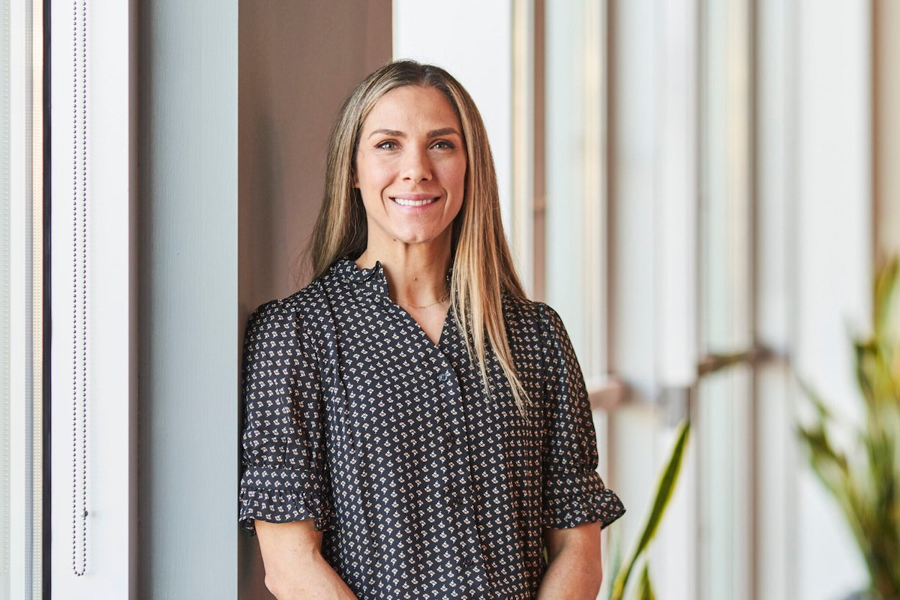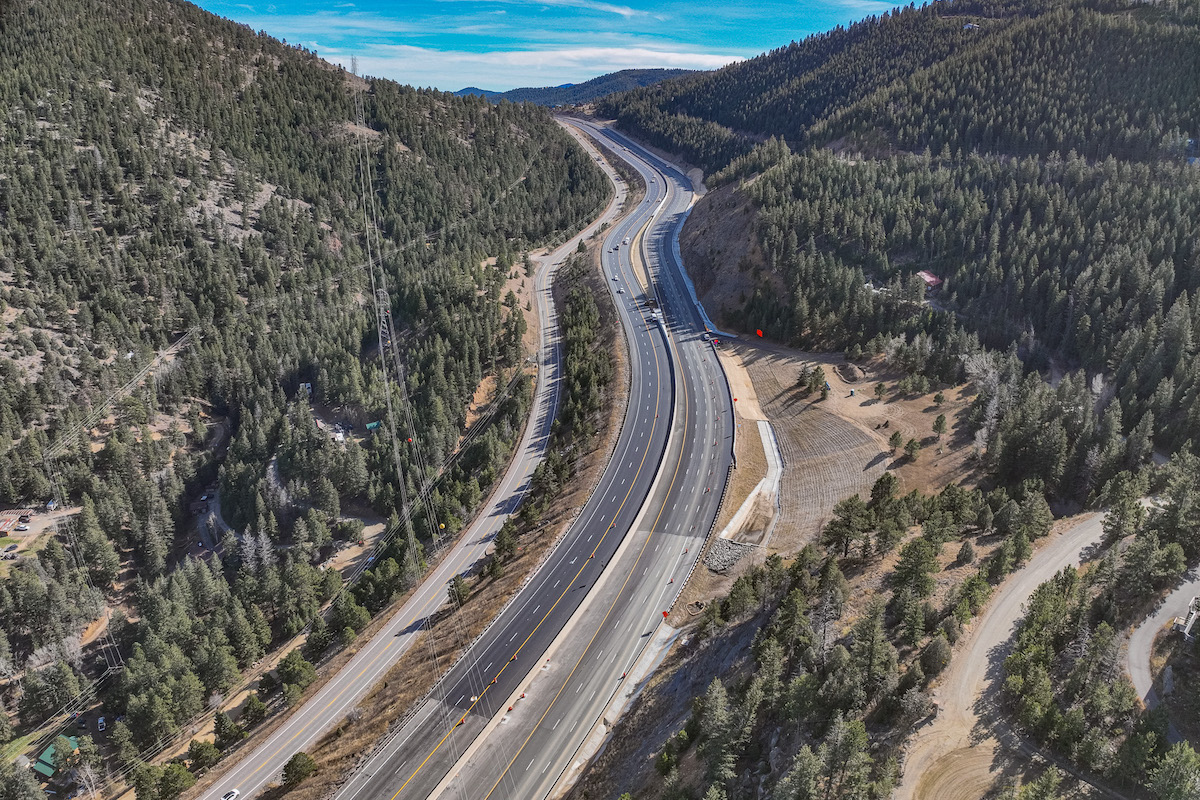Kiewit Infrastructure West Co. of Phoenix started rebuilding the bridge near Littlefield, Arizona, in February 2021, implementing intricate phasing to manage the heavy traffic and numerous special measures to accommodate environmental requirements resulting from the river and protected species in the project area.
Designed to remedy structural deficiencies, the $56 million I-15 Virgin River Bridge No. 1 project includes replacing abutment foundations, piers, and the bridge deck while adding new pavement, pavement markings, guardrail, and signage. The new structure will stretch 867 feet in length, with the state’s longest steel girder span at 340 feet. Wider shoulders will increase safety while the number of lanes – two in each direction – remains the same.
To minimize future maintenance in the heavily traveled area, the Arizona Department of Transportation (ADOT) specified silica fume concrete for the new bridge deck.
“This helps enhance the durability and toughness of the concrete while making it more resistant to chloride and water intrusion,” said Brenden Foley, District Administrator for ADOT’s Northcentral District.

| Your local Gomaco dealer |
|---|
| Faris Machinery |
This project follows rehabilitation efforts on the six other I-15 Virgin River bridges. After more than 40 years of use, they all required some care. Beginning in early 2014, ADOT undertook a series of projects, from minor repairs and resurfacing of decks on Bridge Nos. 2, 3, and 7 to an extensive, $27 million rehabilitation of Bridge No. 6, completed in 2016, that widened the roadway and replaced the superstructure. In summer 2020, crews completed repairs and deck rehabilitation on Bridge Nos. 2, 4, and 5.
Originally opened in 1973, Arizona’s portion of I-15 took a decade to construct through the sandstone Virgin River Gorge north of the Grand Canyon. As the most expensive rural interstate construction project to date, it cost more than $48 million, or about $1.63 million per mile, for the four-lane interstate and seven bridges.
According to ADOT blogs, Max Blazzard, Chief Project Supervisor for the Arizona Highway Department (now ADOT), wrote at the beginning of the original construction, “It’s hard to visualize a divided highway in this area. The canyon is so narrow and deep the sun never hits in some sections during the winter months.”
After Peter Kiewit Sons’ Co. built the roadbed and five bridges for the final 3.8 miles of the original construction, Kent Goodman, their Equipment Superintendent, wrote, “It was the most challenging road project Kiewit ever had.”
In order to follow the federally mandated design through the 500-million-year-old gorge, rock blasting required engineers to rappel down 400-foot cliffs to set explosive charges. Bulldozers operated on ridges high above the canyon floor. Ten-foot walls of water sometimes surged down the canyon, so crews set up crude systems that provided 90-minute warnings for workers and equipment to move to high ground.

| Your local Trimble Construction Division dealer |
|---|
| SITECH Rocky Mountain |
| SITECH Southwest |
| SITECH Northwest |
In the original construction, swamp buggies with 5-foot wheels navigated back and forth through the river, but now environmental rules restrict work around the river and prohibit rock blasting.
Financed primarily through the Federal Aid Highway Program, the I-15 Virgin River Bridge No. 1 project received more than the 94.3 percent the federal government typically contributes to Arizona highway projects. (The state usually provides a 5.7 percent match.)
“For this project, there’s an additional 5 percent increased federal share for innovative products and methods,” Foley said. “It’s related to the use of a mobile application for smart devices to provide public information about the project, and the use of rumble strips near message boards with traffic information to help provide awareness of the boards amidst the high traffic and truck volumes in this corridor.”
The extra measures help ensure that travelers stay up to date on lane restrictions and construction status through the busy corridor.
In order to access the new bridge without impacting the river, Kiewit constructed a three-span, temporary bridge across the water. They also used cofferdams to construct footings 20 feet below both the existing grade and the water table.

| Your local Volvo Construction Equipment dealer |
|---|
| Faris Machinery |
As work progressed, “The pier drilled shafts were challenging due to variable subsurface conditions, the high water table, artesian flows, and variable depths,” Foley said.
In addition, “There’s a list of environmental mitigation measures required for the project area,” he said. “A stormwater pollution prevention plan in combination with a 401/404 permit is in place to protect the Virgin River. Additionally, most native wildlife and vegetation are protected by environmental requirements listed for the project.”
Measures to meet those requirements include netting that prevents debris from falling into the river and fencing around the perimeter at upper elevations to keep tortoises out of danger.
Kiewit divided construction into five phases. In the first phase, they established the staging area and access roads to the river bottom and constructed the substructure, including drilled shafts, columns, and piers. For the most part, they worked below the existing bridge, so the first phase caused virtually no impact on traffic.
In the current work for phase two, traffic shifted to the north half of the existing bridge, with travel lanes reduced to one in each direction while crews construct the south half of the new bridge. When that work finishes, traffic will share the new south half of the bridge, with one lane in each direction, while Kiewit constructs the new north half during phase three. In phase four, traffic will return to each half of the bridge with one lane in each direction while crews perform the final closure pour to complete the bridge deck.

| Your local Bobcat dealer |
|---|
| Ditch Witch West |
| Faris Machinery |
| Romco Equipment Co |
In phase five, Kiewit will complete roadway paving and shift traffic back to the normal pattern with two lanes in each direction on the new bridge. This final phase incorporates a unique revegetation and restoration plan, specified by ADOT to re-establish vegetation impacted by construction. Kiewit’s contract includes a one-year landscape establishment phase to monitor and maintain the revegetation process.

















